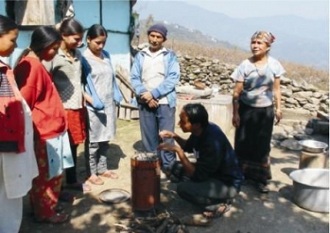Assessing the Climate Impacts of Cookstove Projects: Issues in Emissions Accounting, 2013.
C Lee, et al. Stockholm Environment Institute.
An estimated 2.6 billion people rely on traditional biomass for home cooking and heating, so improving the efficiency of household cookstoves could provide significant environmental, social and economic benefits. Some researchers have estimated that potential greenhouse gas emission reductions could exceed 1 billion tons of carbon dioxide equivalent (CO2e) per year. Carbon finance offers a policy mechanism for realizing some of this potential and could also bring improved monitoring to cookstove projects. However, there are formidable methodological challenges in estimating emission reductions.
This paper evaluates the quantification approaches to three key variables in calculating emission impacts: biomass fuel consumption, fraction of non-renewable biomass, and emission factors for fuel consumption. It
draws on a literature review as well as on interviews with technical experts and market actors, and identifies lessons learned and knowledge gaps.
Key research needs identified include development of additional default factors for biomass consumption for baseline stoves; refinement of monitoring approaches for cookstove use; broadened scope of emission factors
used for cookstoves; accounting for non-CO2 gases and black carbon; and refinement of estimates and approaches to considering emissions from bioenergy use across methodologies.



